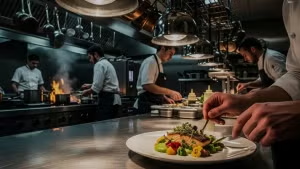Managing overall costs is critical for business success. Foodservice costs, including raw food, labor, and other non-food supplies, are a significant portion of total expenses for care settings and senior communities. How you structure your planned menu is what will determine the bulk of your foodservice costs.
Your menu dictates how much it costs to serve the food, the labor hours necessary, the skillset of your kitchen staff, as well as the supplies and equipment needed to make it all happen. Bottomline: Your menu is at the root of cost control.
Whether you’re writing a new menu or assessing your current one, there are many factors for foodservice leaders to consider when it comes to managing costs. Keep the menu items your group prefers as your guiding principle and focus on these areas to put your foodservice department on track to manage costs:
Menu Philosophy
Review your foodservice goals and determine whether you have a fine-dining brand, or if your focus is value dining or something in between. Identifying a clear brand before writing your menu will help you choose the right menu items to align with that goal. Revisit your philosophy regularly, and make sure your goals, brand, and menu all match up. You want to make sure the message you’re sending is that your dining operation is important to your organization.
Budget
Make sure your budget fits your dining brand. You cannot deliver a fine-dining brand on a value-dining budget. Use industry benchmarks to determine your budget needed to execute the planned menu. A misalignment here can create failure.
Labor
It’s risky to depend on a new hire with little cooking experience to prepare a savory cheese soufflé from scratch. Consider the skill level of your staff before creating menu items that may require more experience. On the flip side, if you have a skilled staff, don’t waste their talents on heat-and-serve items.
Regulations
Nutrition and operational regulations must not be understated or ignored. They are in place to ensure well-balanced meals are served in a safe manner. These regulations affect everything from food variety, portion size, nutrient values, allergens, and even the time the menu is served. Regulations vary based on your setting and dining audience, and they play a key role in menu planning.
Equipment
Before featuring an item on your menu, make sure your kitchen is equipped to prepare it. Substituting a prep method or cooking device jeopardizes quality and safety in a hurry.











